Cấu trúc tổ chức của máy dệt kim tròn
Nov 11, 2023
Knitted fabrics can be divided into single-knit and double-knit.
Single-knit: Fabric woven with a single needle bed.
Double-knit: Fabric woven with a double needle bed.
Có phải khôngknit fabric is single or double-knit depends on the knitting method.
- Warp Knit Structure
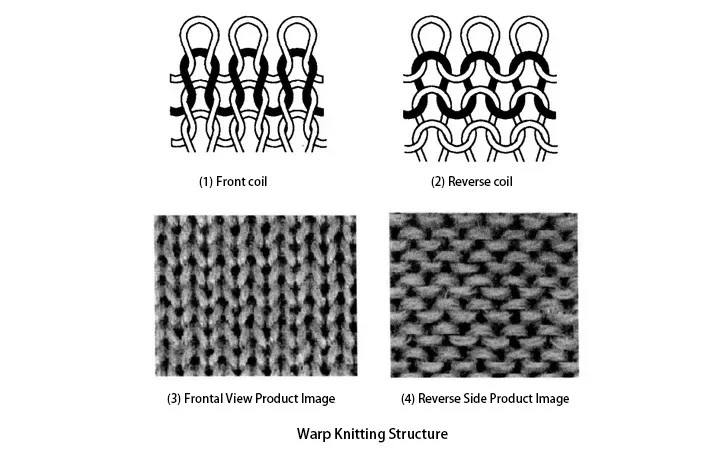
- Rib Knit Structure
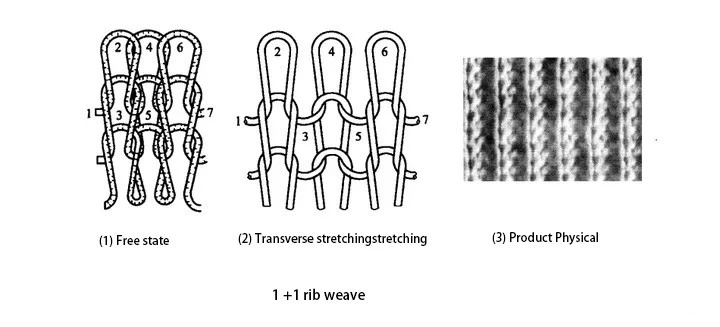
- Double Rib Knit Structure
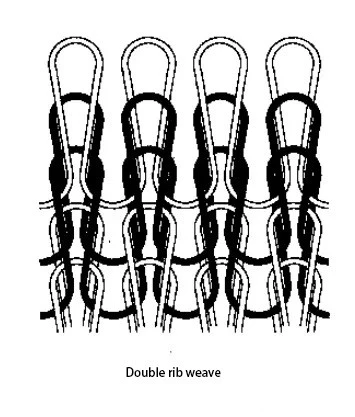
- Additional Yarn Structure
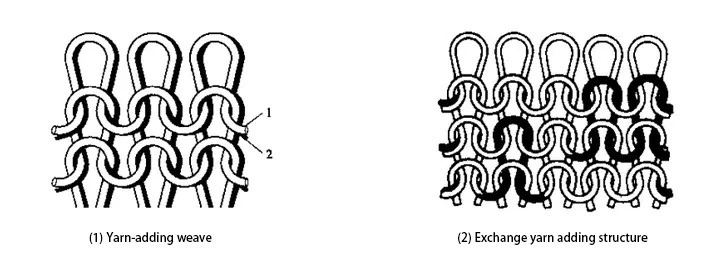
- Padding Structure
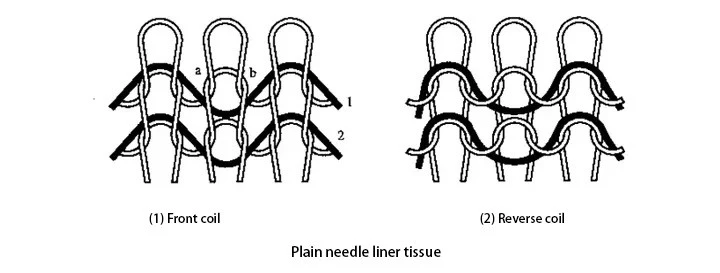
- Loop Pile Structure
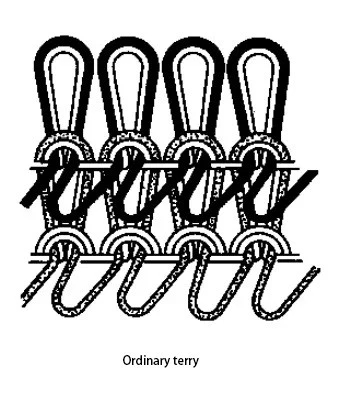
- Color Bar Structure
In addition to the mentioned structures, other structures like single-faced pile structures, double-faced structures, plush loop structures, backing warp structures, additional warp structures, and backing structures can also create horizontal stripes on fabrics.

- Organizations with Vertical Stripe Effects
Hiệu ứng sọc thẳng đứng chủ yếu đạt được thông qua những thay đổi trong cấu trúc mô. Nhiều loại vải được sử dụng cho áo khoác có thể được thiết kế để có hiệu ứng sọc dọc, bao gồm cấu trúc terry, cấu trúc composite gân, cấu trúc composite gân đôi và cấu trúc lấp đầy. Vải có sọc thẳng đứng được hình thành bởi cấu trúc terry thích hợp để sản xuất quần áo mùa xuân và mùa thu. Cấu trúc có gân, chẳng hạn như cấu trúc nổi có gân, tạo ra các sọc kết cấu thẳng đứng trên bề mặt của vải. Cấu trúc đường may có gân có độ dẻo ngang thấp và độ ổn định kích thước tuyệt vời, phù hợp với quần áo thể thao và áo khoác trong mùa xuân và mùa thu. Ngoài ra, việc sử dụng cấu trúc nổi rộng có thể tạo ra các sọc kết cấu thẳng đứng giống như nhung vải trên bề mặt của vải. Những loại vải này thường được dệt từ sợi polyester có độ đàn hồi thấp và rất thích hợp để làm áo khoác vào mùa thu đông, mặc dù chúng có thể dễ dàng vón cục và móc do cấu trúc không đồng đều của cuộn dây, dẫn đến giảm độ bền của vải.
Furthermore, raised flower structures, loop pile structures, and additional yarn structures can also produce vertical stripe effects on fabrics.
- Mesh Structure
Mesh-effect fabrics are widely used in T-shirts and spring/autumn outerwear. By interweaving knit stitches and looped stitches with elongated settling arcs, a mesh effect is formed, often referred to as pearl fabric. Depending on whether the number of plain knit stitches and looped stitches is approximately equal or unequal, various pearl fabrics can be created using an alternating chessboard-like arrangement. Fabrics with this structure exhibit excellent breathability. Double pearl fabrics, woven with combed cotton yarn, can be treated to achieve a sparkling mesh effect, resembling pearls. These fabrics are ideal for summer and spring/autumn clothing. Ribbed structures with added loop and float stitches create a honeycomb-shaped mesh effect, offering good breathability, low longitudinal and transverse extensibility, making them suitable for spring and autumn outerwear. Combining double-ribbed and loop structures creates a honeycomb mesh effect on the fabric surface. These fabrics are thicker than ribbed loop structures, have low extensibility, good resilience, structure, and dimensional stability, making them excellent materials for casual wear in spring and autumn. Fabrics with these structures are often used in moisture-wicking textiles.
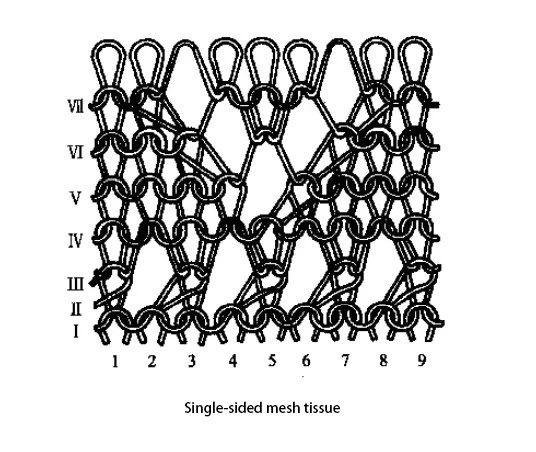
- Jacquard Structure
Jacquard structure involves placing yarns according to the desired pattern on selected needles to create patterns on the fabric. It can be categorized into single-faced and double-faced jacquard fabrics based on the organizational structure, and into solid color and multi-color jacquard fabrics based on color. There are also jacquard loop knit fabrics and jacquard rib knit fabrics. Materials used include low-elasticity polyester, nylon, elastic nylon, nylon filament, acrylic, wool, cotton, and polyester-cotton blends. Jacquard knitted fabrics exhibit clear patterns, rich designs, a thick texture, stable structure, low extensibility, minimal pilling, and a soft and elastic handfeel, making them excellent materials for knitted outerwear.
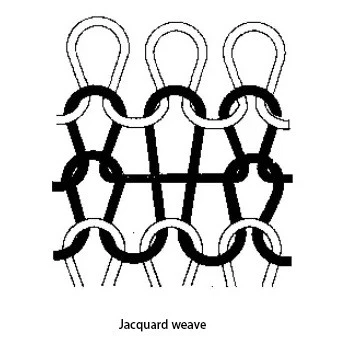
- Cấu trúc composite
Cấu trúc composite bao gồm sự kết hợp của hai hoặc nhiều cấu trúc vải. Nó có thể là sự kết hợp của các cấu trúc cơ bản khác nhau, các cấu trúc thay đổi khác nhau hoặc các cấu trúc màu sắc khác nhau. Dựa trên các đặc điểm của mỗi cấu trúc, cấu trúc composite có thể được tùy chỉnh để đạt được cấu trúc vải mong muốn. Cấu trúc gân và cấu trúc dệt kim jersey được kết hợp để tạo thành cấu trúc lớp không khí có gân, trong khi cấu trúc gân kép và cấu trúc dệt kim jersey được kết hợp để tạo thành cấu trúc lớp không khí có gân kép. Vải với các cấu trúc này dày đặc, dày, đàn hồi, cách nhiệt tốt và có độ dẻo ngang thấp, đảm bảo ổn định kích thước tốt. Nếu lớp bên ngoài của cấu trúc lớp không khí được dệt bằng sợi cotton và lớp lót bên trong được làm bằng sợi đàn hồi cao, nó sẽ trở thành vật liệu tuyệt vời cho đồ lót giữ nhiệt. Nó đặc biệt thích hợp để làm áo khoác nếu các loại sợi khác nhau được sử dụng ở mặt trước và mặt sau.
Combining incomplete rib structures with plain knit structures forms a dot structure, creating a tight and stable fabric surface with distinct dot effects. Jacquard structures combined with loop pile structures form jacquard loop pile structures, allowing different types of yarn to be used on the front and reverse sides. The front side exhibits prominent color effects, high abrasion resistance, while the reverse side is soft with strong moisture absorption, making it an excellent material for knitted outerwear. Polyester-cotton fabrics woven from two different materials, with the front side displaying polyester (chemical fiber) and the reverse side displaying cotton (natural fiber), are stiff, wrinkle-resistant, abrasion-resistant, colorfast, and the inner layer is soft, moisture-absorbing, breathable, insulating, and static-resistant, providing a comfortable wearing experience. Single-faced polyester-cotton fabrics using plain knit additional yarn structures, and double-faced polyester-cotton fabrics often use rib, double-rib loop float structures, or air layer structures, suitable for making sportswear, jackets, and fitness pants.
- Chải vải dệt kim
Brushed knit fabric, also known as flannel, refers to a knitted fabric with a dense layer of short and fine fuzz covering its surface. It is divided into single-sided flannel and double-sided flannel. Single-sided flannel is formed by brushing the back of a backing weave, while double-sided flannel is generally created by brushing both sides of a double-knit fabric. After dyeing, brushed knit fabric can be processed into various varieties, such as bleached, super white, solid color, printed, and more. It can also be woven with dyed or blended yarns to produce solid or color-woven products.
- Sheared Pile Fabric
Sheared pile fabric is produced by shearing the heads of the pile loops on the surface of a single-sided loop pile fabric and then brushing or pressing the pile to create a smooth pile surface, often referred to as velvet. Sheared pile fabric is typically made using chemical fibers for the fabric structure and using combed cotton, acrylic, polyester, or other fibers for the pile yarn. Various patterns, colors, and effects such as embossing or printing can be achieved through jacquard or colored yarns, as well as through shearing and pressing techniques, creating a variety of velvet designs.
- Long Pile Fabric
Long pile fabric is an organization where fiber strips or yarns are fed into the weaving process along with the ground yarn, forming loops in the structure. Fibers attach to the fabric's reverse side in a tufted fashion. By weaving with a mixture of different synthetic fibers, the appearance resembles natural fur, earning it the nickname "artificial fur." Particularly, knitted artificial fur made from acrylic is lighter than natural fur, offering good insulation and wear resistance. The appearance closely mimics natural fur, and it is suitable for making winter outerwear.
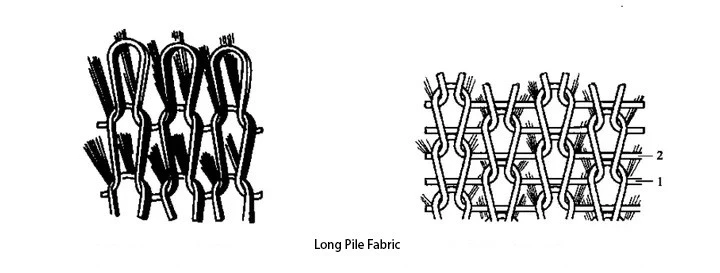
Tổ chức hoa văn không chỉ tạo ra nhiều mẫu khác nhau trên vải dệt kim để tăng cường ngoại hình của nó, mà còn thay đổi tính chất của vải, chẳng hạn như giảm rơi, làm cho vải dày hơn, dày hơn và ổn định hơn về kích thước. Điều này cung cấp một sự lựa chọn vật liệu phong phú cho sản xuất quần áo dệt kim thời trang và phong cách.
next: Nguyên nhân phổ biến gây hư hỏng vải trong quá trình gỡ lỗi máy dệt kim tròn
previous: Triển lãm máy dệt quốc tế Trung Quốc 2023
